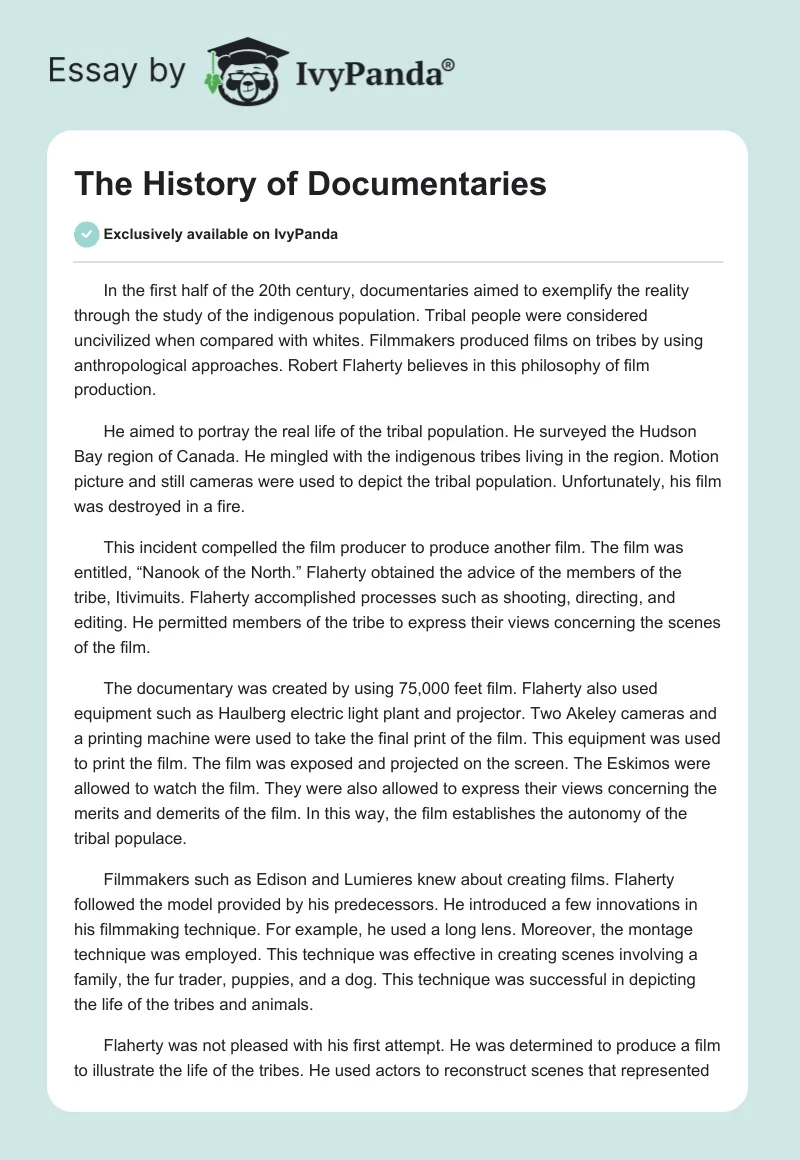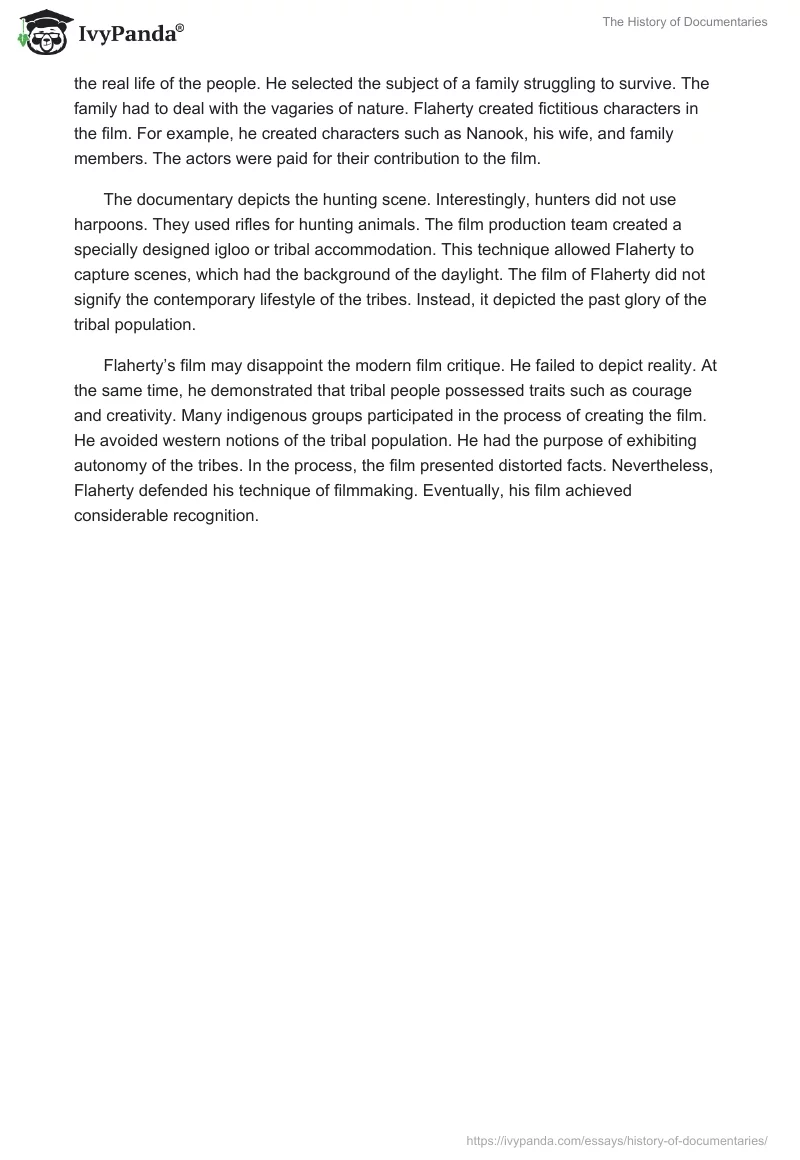In the first half of the 20th century, documentaries aimed to exemplify the reality through the study of the indigenous population. Tribal people were considered uncivilized when compared with whites. Filmmakers produced films on tribes by using anthropological approaches. Robert Flaherty believes in this philosophy of film production.
He aimed to portray the real life of the tribal population. He surveyed the Hudson Bay region of Canada. He mingled with the indigenous tribes living in the region. Motion picture and still cameras were used to depict the tribal population. Unfortunately, his film was destroyed in a fire.
This incident compelled the film producer to produce another film. The film was entitled, “Nanook of the North.” Flaherty obtained the advice of the members of the tribe, Itivimuits. Flaherty accomplished processes such as shooting, directing, and editing. He permitted members of the tribe to express their views concerning the scenes of the film.
The documentary was created by using 75,000 feet film. Flaherty also used equipment such as Haulberg electric light plant and projector. Two Akeley cameras and a printing machine were used to take the final print of the film. This equipment was used to print the film. The film was exposed and projected on the screen. The Eskimos were allowed to watch the film. They were also allowed to express their views concerning the merits and demerits of the film. In this way, the film establishes the autonomy of the tribal populace.
Filmmakers such as Edison and Lumieres knew about creating films. Flaherty followed the model provided by his predecessors. He introduced a few innovations in his filmmaking technique. For example, he used a long lens. Moreover, the montage technique was employed. This technique was effective in creating scenes involving a family, the fur trader, puppies, and a dog. This technique was successful in depicting the life of the tribes and animals.
Flaherty was not pleased with his first attempt. He was determined to produce a film to illustrate the life of the tribes. He used actors to reconstruct scenes that represented the real life of the people. He selected the subject of a family struggling to survive. The family had to deal with the vagaries of nature. Flaherty created fictitious characters in the film. For example, he created characters such as Nanook, his wife, and family members. The actors were paid for their contribution to the film.
The documentary depicts the hunting scene. Interestingly, hunters did not use harpoons. They used rifles for hunting animals. The film production team created a specially designed igloo or tribal accommodation. This technique allowed Flaherty to capture scenes, which had the background of the daylight. The film of Flaherty did not signify the contemporary lifestyle of the tribes. Instead, it depicted the past glory of the tribal population.
Flaherty’s film may disappoint the modern film critique. He failed to depict reality. At the same time, he demonstrated that tribal people possessed traits such as courage and creativity. Many indigenous groups participated in the process of creating the film. He avoided western notions of the tribal population. He had the purpose of exhibiting autonomy of the tribes. In the process, the film presented distorted facts. Nevertheless, Flaherty defended his technique of filmmaking. Eventually, his film achieved considerable recognition.


